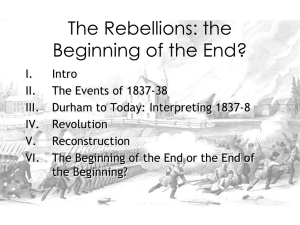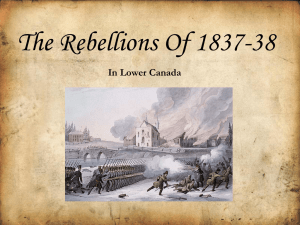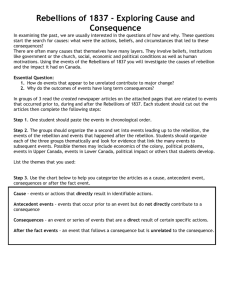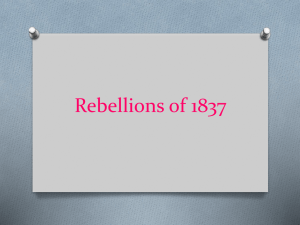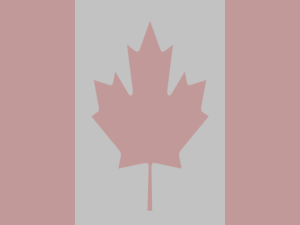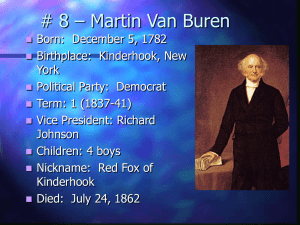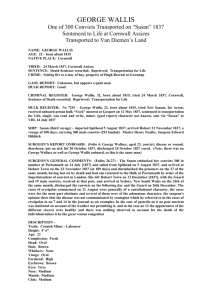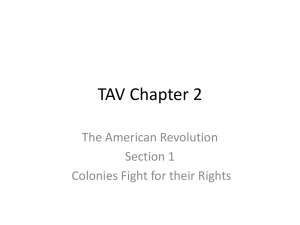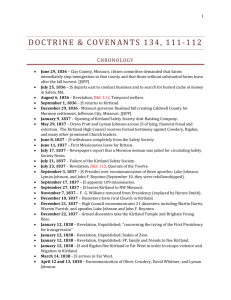The Rebellions of Upper and Lower Canada 1837-1838
advertisement
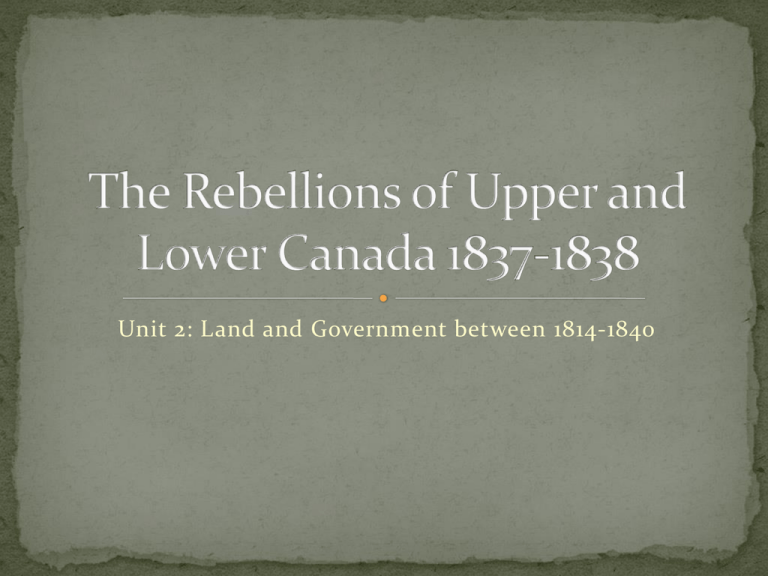
Unit 2: Land and Government between 1814-1840 Conflict between French people and Chateau Clique. French culture and way of life threatened by oligarchy. Undemocratic government. 1833 depression unemployment and bad harvest little government help. What is nationalism? - attitude that the members of a nation have when they care about their national identity. Grew because of lack of government representation, discrimination, and unfair taxes. Led the reform movement formed a radical group called the Patriotes Held public demonstrations against the oligarchy. Came up with 92 resolutions outlining Canadien grievances. 1837: British appoint Lord Russell to intervene 10 resolutions: Rejected any form of responsible government. Result?? - Fueled reform movement The Vindicator - Boycott English goods and banks. - Members of Legislative Assembly (Patriotes) refused to approve taxes. The Patriotes and Fils de la Liberte joined together in street fights against the Tory Doric Club in the fall of 1837 In fear of an armed uprising governor proclaimed martial law, banned protests, newspapers, and issued charges of treason. North-east of Montreal Patriotes led by Wolfred Nelson fought British soldiers to a stand off. December 1, 1837 rebels surrendered to British army. Many leaders of the Patriot fled to the US. Villages burned by British army and the Doric Club. British – 32 Dead French/Patriotes – 73 dead 29 Executed for Treason 38 Deported to Australia Government set in place that was not responsible to the elected assembly. Control of clergy reserves. Unfair land policies catered to the upper class. 1833 depression widespread crop failures. Radical leader and politician. Critic of the colonial government. Attacked Family Compact in his newspaper: Colonial Advocate. Appointed Lieutenant- Governor of Upper Can. allied with Family Compact and was against reform movement. He called the radical movement “Yankee-loving traitors” Fall 1837 rebellion in Lower Canada Mackenzie saw this as an opportunity: 1. Held public demonstrations. 2. Trained troops. 3. Called for an attack while troops were busy fighting the rebellion in Lower Canada. December 4, 1837 first death was British Loyalist Colonel Robert Moodie (the messenger). December 5, 1837 Mackenzie and his troops continue on Yonge St. but missing half their troops because of miscommunication. - December 7, 1837 Van Egmond arrived but was too late British troops were too strong. Many of the leaders were transported to the penal colonies. Colonel Van Egmond was tried, convicted and died in a Toronto jail. John Montgomery was captured, escaped and then returned to Canada after the general amnesty to rebuild his tavern on the exact location of the original. Put £1,000 on Mackenzie's head He had already left the country dressing in woman's clothing. Unfortunately, he had dropped his briefcase as he was fleeing. It had a list of everyone involved. After the rebellions the British Government : new monarch Queen Victoria appointed Lord Durham to report on the reasons of the rebellion. What did he find? What did he conclude?
